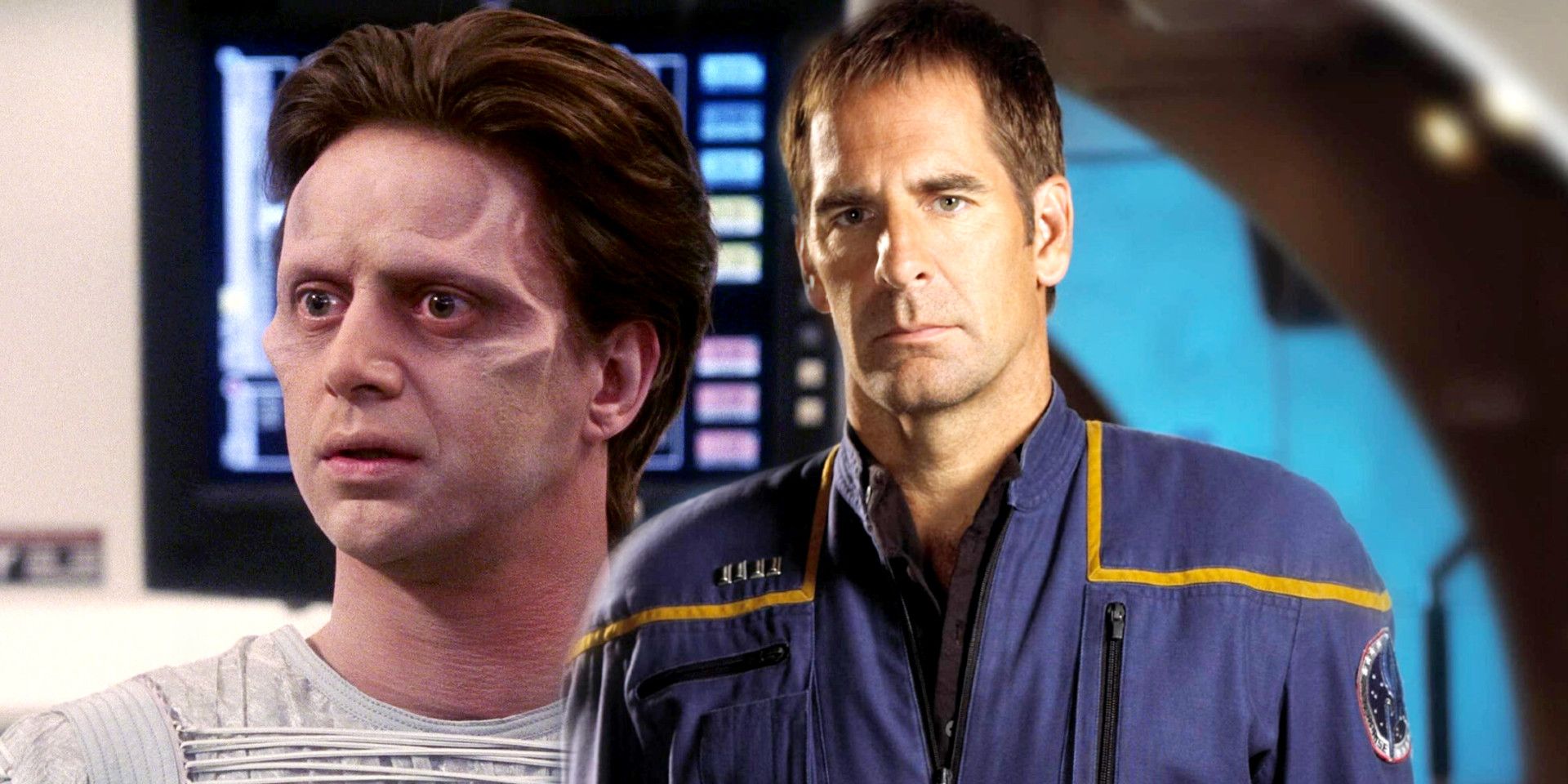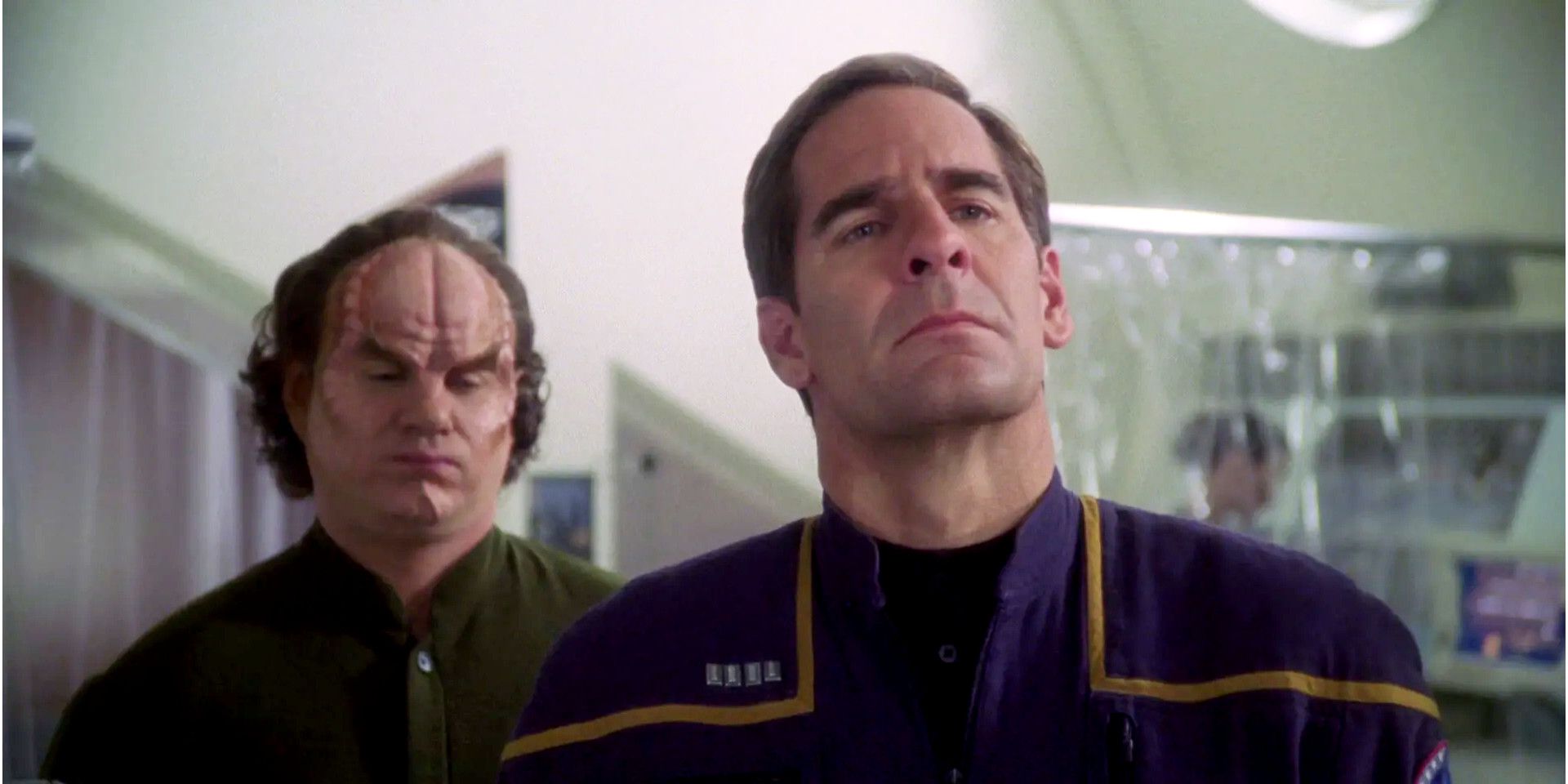
In the episode titled “Dear Doctor,” Star Trek: Enterprise reveals the tragic origin of the spacefaring organization Starfleet’s Prime Directive, a rule forbidding contact with less-developed civilizations. Also referred to as “General Order 1,” the Prime Directive is portrayed throughout the Star Trek series as a fundamental principle in Starfleet’s ideology. However, Enterprise’s time frame is set before the Directive’s inception, leaving Captain Jonathan Archer and his crew facing numerous ethical quandaries.
The Prime Directive serves an integral and complicated role in the Star Trek canon, setting the standard protocol for all Starfleet personnel. According to the Directive, no contact can be made with civilizations classified in Star Trek as “pre-warp” or civilizations that are incapable of deep space travel. This is to ensure that less-developed societies thrive without being influenced by outside forces, essentially guaranteeing an order of events free from intrusion. The Prime Directive was yet to be established when the first Enterprise, commanded by Archer, embarked on its maiden voyage, but it would soon come into play after the crew’s visit to the planet Valakis.
The crew learns that the Valakians are an alien race dying of a mysterious disease. No fewer than 50 million of the Valakians are infected. Enterprise’s chief medical officer Phlox studies the disease to develop a cure, only to discover Star Trek's mysterious illness is a genetic flaw in Valakian DNA that will render the population extinct within 200 years. The focal point of the episode shifts from finding a cure to deciding whether Phlox’s humanitarian intervention to save the race is, in fact, ethical.

The issue becomes apparent when Phlox and Captain Archer reach an impasse on whether to deliver the cure. Phlox suggests that providing the Valakians with the cure would be artificially meddling with their natural evolution, effectively doctoring their fate. Archer vehemently disagrees, claiming Starfleet’s mission mandates they assist anyone in distress. Despite their opposing views, both are distraught with the magnitude of the dilemma.
They reach a compromise, and Archer entrusts Star Trek's Phlox to provide the Valakians with medicine to ease their symptoms instead of a cure. Nevertheless, the episode’s conclusion is noticeably pensive, reflecting Archer’s lingering uncertainty about his decision. Starfleet’s creation of the Prime Directive would clarify the organization’s purpose in space, but it would not make future ethical conflicts any less challenging.
The lack of a happy ending forces Star Trek: Enterprise’s audience to grapple with the issue of control. How much is too much? The Prime Directive is designed to maintain Starfleet’s neutral role as an exploratory organization, but this “hands off” approach has resulted in contentious outcomes on many a mission. Despite repeated encounters with less-advanced civilizations, Starfleet perseveres to meet the challenge to answer the call for help without changing time’s natural course.
Comments
Post a Comment